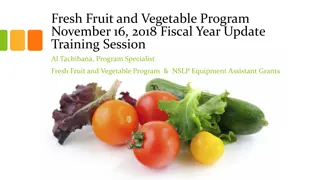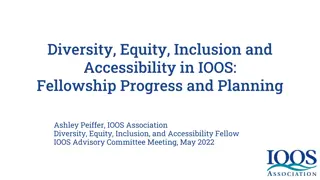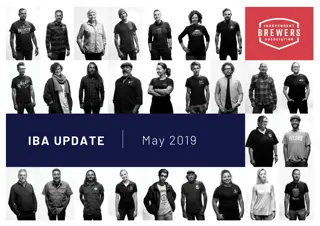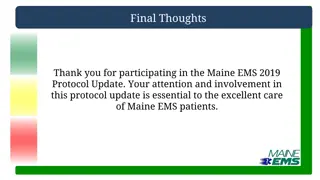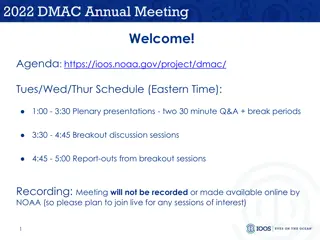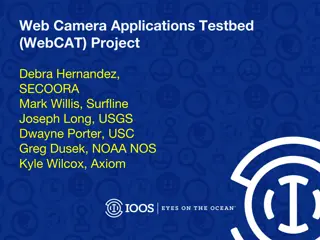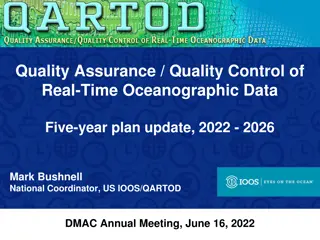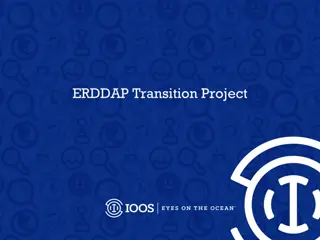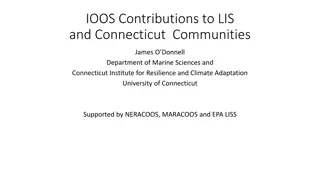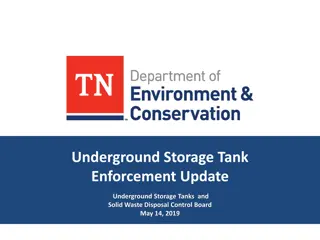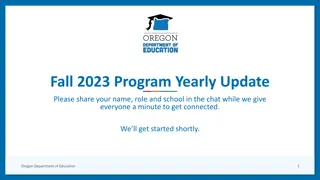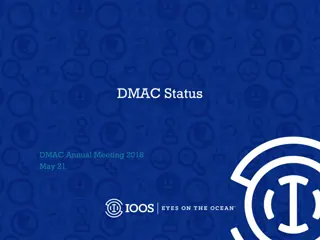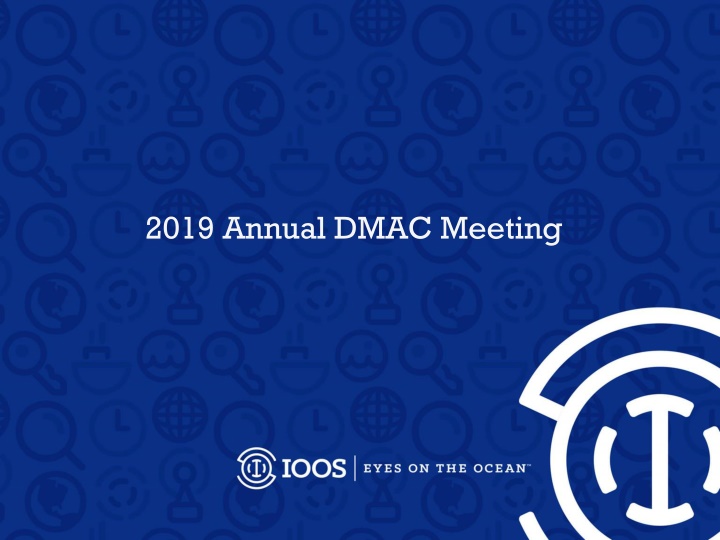
IOOS Annual Meeting Highlights & Priorities for FY2019 and Beyond
Explore key updates from the 2019 Annual DMAC Meeting and the IOOS Program Office, including the strategic vision, investment in DMAC activities, and U.S. IOOS priorities for sustaining observations, data management, modeling, and enterprise excellence. Learn about ongoing projects, goals, and initiatives aimed at improving lives and livelihoods through ocean, coastal, and Great Lakes information.
Download Presentation

Please find below an Image/Link to download the presentation.
The content on the website is provided AS IS for your information and personal use only. It may not be sold, licensed, or shared on other websites without obtaining consent from the author. If you encounter any issues during the download, it is possible that the publisher has removed the file from their server.
You are allowed to download the files provided on this website for personal or commercial use, subject to the condition that they are used lawfully. All files are the property of their respective owners.
The content on the website is provided AS IS for your information and personal use only. It may not be sold, licensed, or shared on other websites without obtaining consent from the author.
E N D
Presentation Transcript
IOOS Program Office Updates April 30, 2019 | Krisa Arzayus, Deputy Director
IOOS Strategic Plan Vision - Improve lives and livelihoods with ocean, coastal, and Great Lakes information Mission - To produce, integrate, and communicate high quality ocean, coastal and Great Lakes information that meets the safety, economic, and stewardship needs of the nation. Five Strategic Goals: Goal 1: Sustain long-term, high-quality observations of ocean, coastal, and Great Lakes environments to address local, regional and national needs. Goal 2: Deliver standardized, reliable, and accessible data. Goal 3: Support model predictions that address a wide range of user requirements. Goal 4: Provide integrated, user-driven products and tools. Goal 5: Increase the reach and effectiveness of IOOS through partnerships, stakeholder engagement, and Enterprise excellence. https://cdn.ioos.noaa.gov/media/2018/02/US-IOOS-Enterprise-Strategic- Plan_v101_secure.pdf 3
FY19 Investment in DMAC Activities, Projects DMAC Community DMAC is the collection of people, processes, and technology that enable the dissemination of diverse and distributed data sets using the WWW as the platform. ATN Workshops Support for ESIP Biological data standards workshop Ocean HackWeek Ongoing Projects Data Assembly Centers - Gliders, ATN, HF Radar, & NDBC/IOOS MetOcean EDS Catalog Sensor Map ERDDAP 4
U.S. IOOS Priorities- FY2019 and beyond Goal 1: Sustaining observations Aging infrastructure - how to sustain and innovate Filling observing gaps- surface currents, gliders Ecosystem observing framework- e.g. HABS, ocean noise Goal 2: Data management Hurricane prediction-incorporating glider data for improved hurricane intensity forecasts Improve real time data flow into data tanks and complete the pan-regional data portal, with a goal of strengthening delivery of consistent observations to operational modelers. Certification Audits- 3 RAs (PacIOOS, GLOS, MARACOOS); low level of effort, checklist format 5
U.S. IOOS Priorities- FY2019 and beyond Goal 3: Modeling Implement IOOC Coastal Modeling Strategy Support community development of coastal ocean models by strengthening the federal/non-federal community of practice and clarify research to ops pathways Goal 4: Products and Tools Demonstrating the value of IOOS- user stories, economic valuation studies, Sea Level rise- RAs as translators for SLR data and information Goal 5: Enterprise Excellence U.S. IOOS Federal Advisory Committee- a new committee, new directions for IOOS Streamlined internal business practices 6
OceanObs19 Update Papers: Coastal Mooring Observing Networks and their Data Products: Recommendations for the Next Decade (Kathy Bailey) Data Interoperability Between Elements of the Global Ocean Observing System (Derrick Snowden) From the Oceans to the Cloud: opportunities and challenges for data, models, computation and workflows (Tiffany Vance, Micah Wengren) Global Observational Needs and Resources for Marine Biodiversity (Gabrielle Canonico) Marine Sensors A Global Ocean Observing System (GOOS), delivered through enhanced collaboration across regions, communities, and new technologies (Carl Gouldman, Laura Griesbauer) Other activities: 20 Years of IOOS Celebration Sept. 17th Collecting pictures, stories, and memories IOOS Exhibit Booth 7
Regional Ocean Partnerships Executive Order 13840: Ocean Policy to Advance the Economic, Security, and Environmental Interests of the United States, emphasizes improved access to and use of federal and non-federal data. FY2019 appropriations: Within funding for IOOS Regional Observations, $1.5M for the regional ocean partnerships - IOOS and OCM coordinate. 9 regions - 4 regional ocean partnerships in the Northeast, Mid-Atlantic, Gulf of Mexico, and West Coast & 5 without ROPs in Great Lakes, Southeast, Caribbean, Alaska, and Pacific Islands. Funding will go to ROPs in the 4 and IOOS RAs in the 5 respectively. Kick-off webinar on May 22 8
ERDDAP Transition Project Highlights: IOOS DMAC system will better align with ocean obs community in adopting ERDDAP IOOS Metadata Profile (1.2) nearing finalization for deployment to RA ERDDAP servers Gold Standard ERDDAP configuration under development ERDDAP 2.0 release due soon More details to follow later today... IOOS Environmental Sensor Map ERDDAP Instance: https://erddap.sensors.ioos.us/erddap/ 9
Thank You! The U.S. IOOS Office





